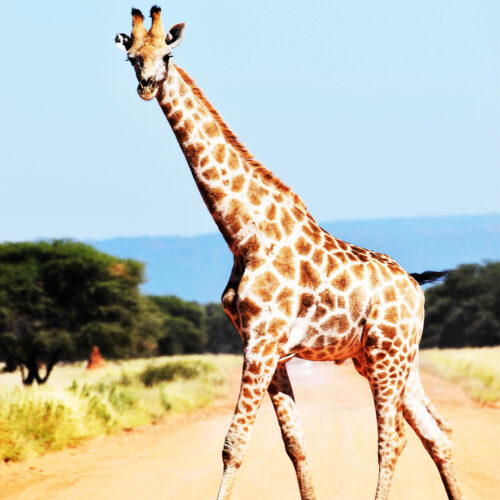
Warning: May Cause Giraffe Envy Among Friends and Family
Staying in an African hotel or lodge where giraffes walk by is a truly unique and unforgettable experience. Imagine waking up to the sight of these magnificent creatures gracefully strolling past your window or enjoying your breakfast as a giraffe extends its long neck to join you.
The African continent is home to many beautiful locations that offer guests the chance to witness these gentle giants in their natural habitat, creating a magical atmosphere that cannot be found anywhere else.
Luxury lodges in the heart of national parks or eco-friendly camps in the middle of the savannah, there’s plenty of accommodation options provide the opportunity to observe giraffes up close and personal.
Some of the most well-known hotels that offer this experience are:
- Giraffe Manor in Nairobi, Kenya: This hotel is located on 140 acres of forested land, and giraffes roam freely on the property. Guests can watch them walk by their windows or feed them from their breakfast table.
- Sarova Salt Lick Game Lodge in Taita Hills, Kenya: This hotel is built on stilts and overlooks a watering hole where giraffes, elephants, and other animals come to drink. Guests can watch the animals from their rooms or the hotel’s observation deck.
- Tongabezi Lodge in Livingstone, Zambia: Located on the banks of the Zambezi River, guests can watch giraffes, zebras, and other wildlife from their rooms or the hotel’s observation deck.
- The Ark in Aberdare National Park, Kenya: This hotel is located in the heart of the Aberdare National Park, and guests can watch these gentle giants, elephants, and other wildlife from the hotel’s viewing decks.
- Stanley’s Camp in Okavango Delta, Botswana: This camp is located in the Okavango Delta, and guests can watch these long legged creatures, elephants, and other wildlife from the comfort of their tents.
TIP: It’s worth noting that while these hotels offer a chance to see giraffes up close, they are still wild animals and should be treated with caution and respect.
Are you a lover of all things giraffes? Check out these gifts or you can also symbolically adopt one through the World Wildlife Federation charity!
Did you know?
One interesting fact about giraffes is their unique way of communicating with each other. While they don’t have vocal cords, they have a particular organ in their neck called the laryngeal pharynx that allows them to produce a low-frequency sound that is too deep for humans to hear.
This sound, called infrasound, can travel up to two miles (3.2 km) and is thought to be used by giraffes to communicate with each other over long distances. In addition to infrasound, giraffes communicate through body languages, such as head movements and tail flicks.
A little history:
Giraffes beginnings date back to the Miocene epoch, estimated to be around 20 million years ago. Fossil evidence suggests that the ancestors of modern-day giraffes were small, antelope-like animals that lived in what is now Asia.
Around 8 million years ago, these animals began to migrate from Asia to Africa, where they evolved into the animals we know today. During this time, they also underwent a significant physical transformation, growing much taller and developing their long necks used to reach leaves on tall trees.

Throughout history, they have been revered and admired by many different cultures. Ancient Egyptians depicted them in their art; some believed they were a symbol of grace and beauty. In the 1400s, they were given as gifts to European monarchs, and they quickly became a popular attraction in royal menageries.
In the 1800-1900s, these creatures were hunted for their meat, hide, and sport. However, as conservation efforts increased, their populations began to rebound, and today, they are listed as a vulnerable species by the International Union for Conservation of Nature (IUCN).
Giraffes are still admired and beloved by people worldwide, and they remain an essential part of many African cultures and ecosystems.



